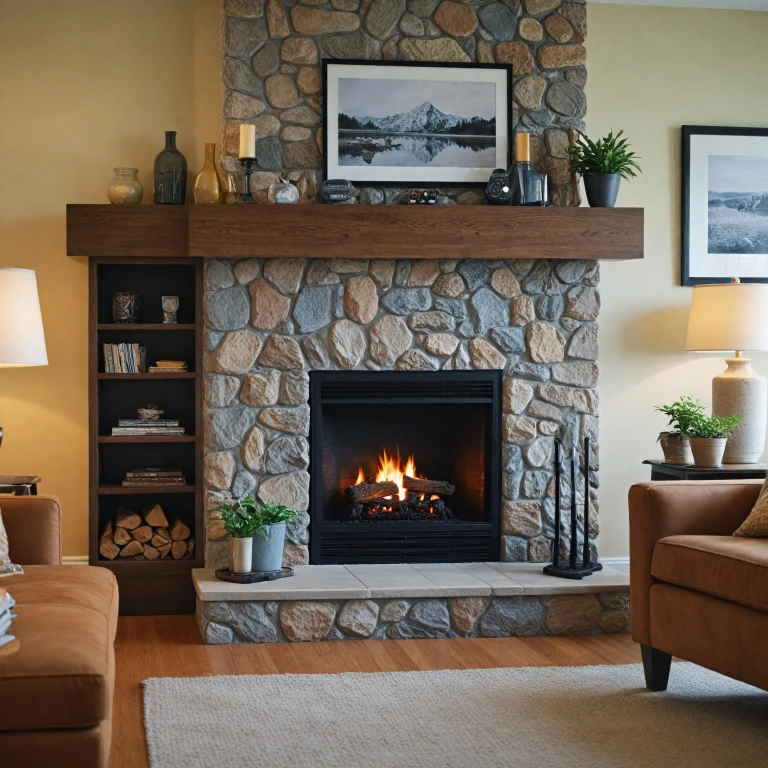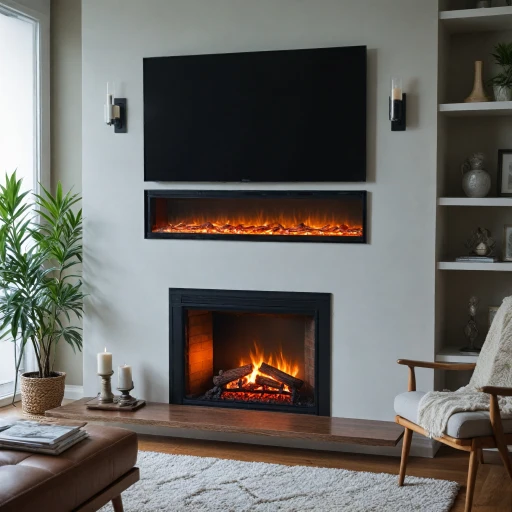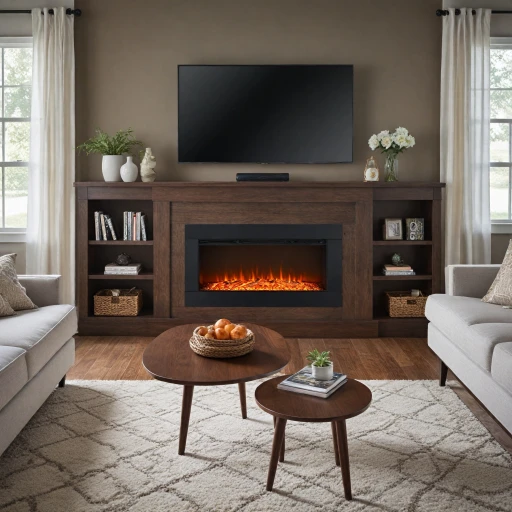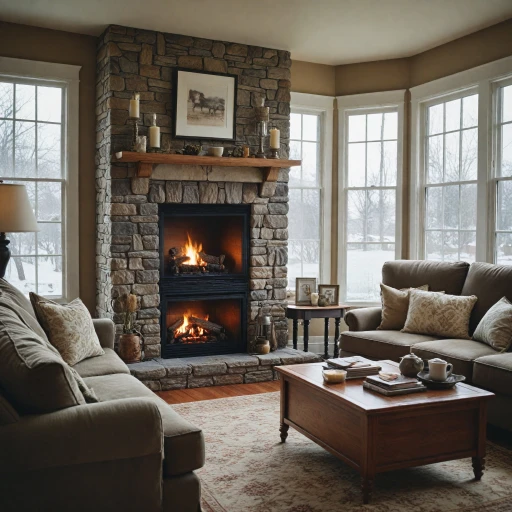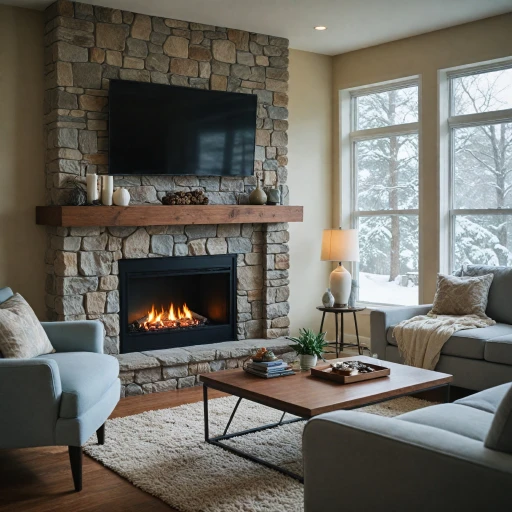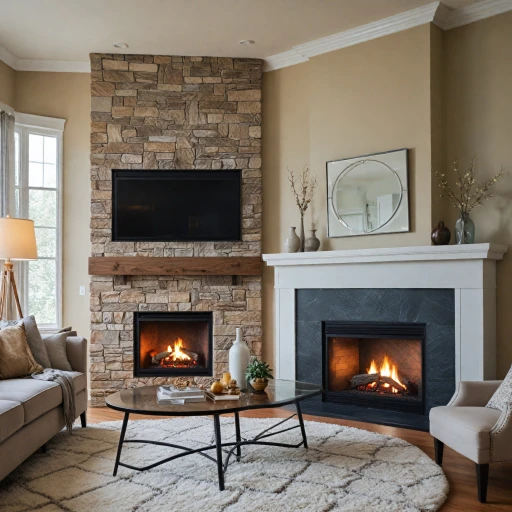
Factors Influencing Installation Costs
Considerations That Add Up
The expenses tied to installing an electric fireplace can vary significantly based on a few pivotal factors. Here’s the lowdown on what to keep an eye on, as these can greatly influence the overall installation cost.
- Type of Unit and Fireplace Insert: The cost spectrum for electric fireplace units is broad. A high-end model with unique features might fetch a higher price tag than a basic version. The decision to install a simple wall-mounted unit or opt for an elaborate furniture-style fireplace can notably impact costs.
- Location and Size: Determining where to set up your electric fireplace is crucial. Costs may rise with fireplaces that need more involved installation processes, like those intended for built-in setups or those surrounded by stone or other custom elements. Also, larger units generally cost more.
- Prep Work: Before you can enjoy the warm glow of your new electric fireplace, existing spaces can require preparation. This may involve remodeling a current wood fireplace or gas fireplace space to be fit for electric functionality. Decisions in this area can affect the installation process and costs.
- Electricity Access: It’s worth considering your current electrical setup. An easy access point close to your installation site can make things more straightforward, whereas if wiring changes are needed, this will increase your total costs.
Adopting these insights can help in planning and categorizing your expenses effectively. For those looking to harmonize comfort and function, another option could be electric ceiling heaters, adding a layer of warmth without impacting the ground-level layout. Knowing the factors influencing your budget helps set realistic expectations and paves the way for a cost-effective journey into bringing electric warmth to your home.
Comparing Electric Fireplaces to Other Types
Evaluating Electric Fireplaces Against Wood and Gas
When deciding on a fireplace, it's crucial to weigh the options available, mainly electric, wood-burning, and gas fireplaces. Each has its own charm and financial considerations. Electric fireplaces are often praised for their convenience. Unlike wood fireplaces, they don't require a chimney or wood storage, reducing both ongoing maintenance and the initial installation cost. This can make an electric option more appealing to those concerned about routine cleaning tasks and debris management. Gas fireplaces offer a somewhat similar convenience to electric units. However, both the installation costs and maintenance tend to be higher due to the need for gas line setups and periodic checks. Yet, they do offer a more authentic flame aesthetic than electric fireplaces. For those particularly drawn to the rustic feel of a wood-burning fireplace, it's essential to consider the immediate and ongoing costs involved. Typically, the burning fireplace will demand a sturdy chimney, regular cleaning, and the hassle of wood purchase and storage. The average cost to install such a type can indeed add up quickly. Outdoor fireplaces deserve a mention here too. Whether you're installing stone or another type of hearth, the environment and location can dramatically impact installation costs and the type best suited to your needs. In general, if you're prioritizing reduced initial expenses and easier upkeep, electric fireplaces often come out on top. They offer you a stylish alternative without the complexities tied to traditional options. If you're interested in further insight on this topic, exploring Understanding the Expenses of Installing an Electric Fireplace might provide some valuable clarity.DIY vs. Professional Installation
Choosing Between DIY and Professional Installations: The Key to Cost Efficiency
When deciding whether to go the DIY route or hire professionals for your electric fireplace installation, several factors come into play. Sure, taking the do-it-yourself path might seem cost-effective at first—but hold your horses, there's more to consider! Taking on a DIY project can save you money on labor costs. However, without the proper knowledge or tools, you might end up with additional expenses if things don't go as planned. Installing electric fireplaces can involve working with electrical systems, so a misstep could lead to higher repair costs or even safety hazards. Contrarily, opting for professional installation provides peace of mind. Fireplaces—and especially their installation—often require expertise to ensure everything is safe and functions correctly. Professional fireplace installers have the experience and can navigate potential issues more effectively, ensuring your unit is up to code and running smoothly. They'll also be able to handle complex designs or non-standard installations, whether you're eyeing a sleek insert or a statement piece with stone surrounds. While professional installers may raise the average installation cost, their work could potentially save you money in the long run. It decreases the risk of needing costly repairs from an improper DIY job. For the adventurous souls itching to roll up their sleeves, ensure you're armed with the appropriate installation guides and safety gear. Remember, electrical components can be unforgiving if not handled with care. A misjudgment in wiring or placement could cost you much more than what you'd spend on professional help. In conclusion, weigh your abilities, cost priorities, and the complexity of the installation job. Sometimes, the smartest choice is to leave it to the pros, especially if you're installing anything beyond a simple plug-in electric unit.Long-term Savings and Efficiency
Long-Term Financial Benefits and Energy Efficiency
Switching to an electric fireplace can be a sound decision for those looking to enhance their home's ambiance without breaking the bank long-term. Here's why:
- Energy Efficiency: Electric fireplaces are recognized for their energy efficiency. Compared to traditional wood burning and gas fireplaces, electric options transform most of the electricity they use directly into heat. This means less financial drain from wasted energy.
- Lower Maintenance Costs: With no need for a chimney or flu, electric fireplaces sidestep the maintenance costs associated with traditional fireplaces. Bye-bye sweeping chimney soot or ensuring your gas fireplace is correctly vented and sealed.
- Consistent Heating Costs: Unlike gas fireplaces which can fluctuate in cost depending on natural gas prices, or wood burning fireplaces that require consistent purchase of firewood, the electricity rates remain relatively stable, helping you plan your monthly budget with fewer surprises.
- Longevity: The lifespan of an electric heating unit can exceed that of other fireplace types hands-down. Less wear and tear means fewer needs for repairs or replacements.
With these energy-efficient and money-saving features, it's clear that choosing an electric fireplace installment can be a wise investment for both comfort and your wallet.
Additional Costs to Consider
The Small Extras That Add Up
When planning to install an electric fireplace, being aware of additional costs is just as important as understanding the main installation expenses. These add-ons can lead to a more satisfactory setup but might catch you off guard if not anticipated.- Chimney and Ventilation Considerations: Unlike wood or gas fireplaces that require a chimney for venting smoke, electric fireplaces eliminate this need. However, if you’re transforming a space previously dedicated to a wood-burning or gas unit, steps must be taken to safely seal off existing chimneys or adjust venting.
- The Hearth and Surrounding: Many choose to enhance their electric fireplaces with decorative mantels or surrounds, often with materials like wood, stone, or brick. These additions, while not mandatory, elevate the fireplace’s aesthetics, but also contribute to the overall cost.
- Electrical Outlets and Wiring Modifications: Depending on the selected electric fireplace model and the room layout, there might be a need to install a new electrical outlet or extend wiring. This step, often managed by a professional, ensures safe and efficient operation.
- Fireplace Inserts: If you’re replacing a traditional burning fireplace, you might consider an electric fireplace insert. While these inserts simplify the transition, they can be more expensive than standalone units due to their size and specific design.
- Permits and Inspection: In some locations, even for electric models, local building codes might require permits or electrical inspections to ensure safety after installation. This is particularly pertinent when factoring in ventilation or electrical modifications.
Tips for Budget-friendly Installation
Making It Affordable: Practical Tips for Your Wallet
Getting an electric fireplace can be quite an investment, but you can cleverly navigate through the expenses without burning a hole in your pocket. Here's how to strategize your spending smartly.
Choose the Simpler Models: Start off by selecting an electric fireplace unit that fits your basic needs. Opting for simpler models can save you a significant chunk of the initial installation cost. Plus, electric fireplaces often boast a lower average cost compared to traditional wood or gas fireplaces.
DIY versus Professional Installation: We've previously talked about the differences between doing it yourself and hiring pros. If you're handy and have some experience, you can cut down on labor costs by tackling some of the installation tasks yourself. But remember, safety first! A professional might be worth the extra cost install.
Hunt for Discounts and Deals: Keep an eye out for sales, promotions, or end-of-season discounts at hardware stores or online retailers. You'd be surprised by how much cost-cutting happens with a keen eye.
Repurpose Existent Structures: If you have an unused wood burning fireplace, consider using it as a foundation for an electric insert. This can minimize alterations and reduce overall fireplace costs.
- Avoid extensive remodeling around your fireplace. Instead, dress up your space using cost-friendly materials like stone veneers or reclaimed wood for the hearth.
- Explore energy-efficient models that provide warmth but consume electricity more prudently, translating into long-term savings.
By making savvy choices, enjoying the warmth and ambiance of an electric fireplace becomes not just a cozy dream but a delightful reality that's kind to your bank account.
